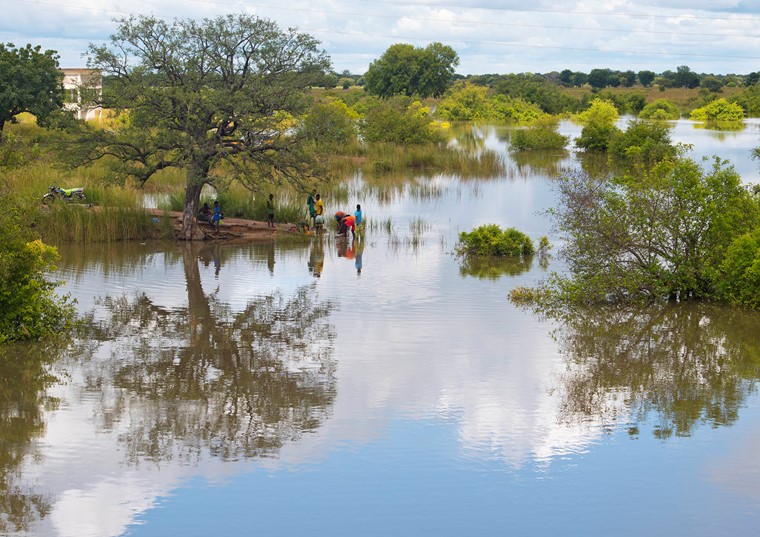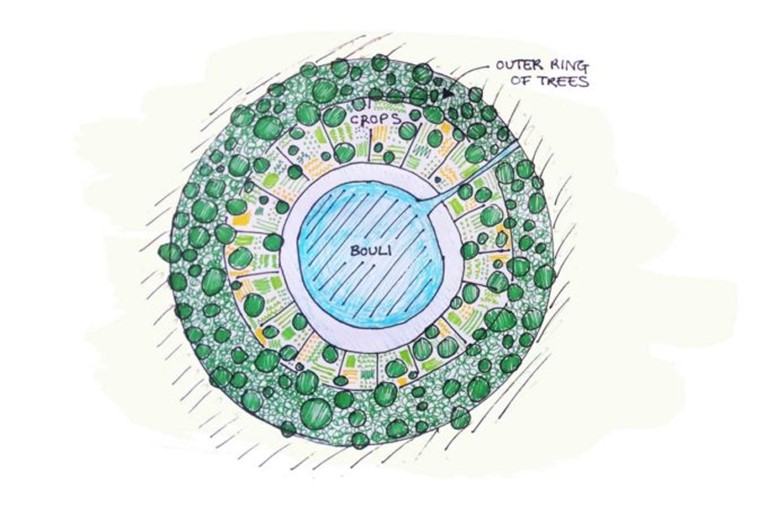
A bigger and bolder solution to water scarcity
01st June 2020In the drylands of Africa, water shortages in the dry season means that the land is unable to support plant life and, for the communities living there, life is a struggle. Tree Aid’s new CEO, Tom Skirrow, talks about how we’re helping to conserve water all year round to support communities in Burkina Faso to transform their environment for now and for future generations.
When we imagine rainfall in the drylands of Africa, for most of us two notions come to mind; it rains rarely and when it does rain, there isn’t much. But what might come as a surprise to people is that the difference in rainfall between the UK and the dryland areas where Tree Aid works isn’t as stark as you might imagine. The average annual rainfall in Burkina Faso is between 600 and 900mm and in the UK, it is roughly 800mm.
So, where does all the rain go?
The problem in countries like Burkina Faso is that the rain doesn’t fall all year round. Rainfall here arrives over a much shorter period of time, with the rainy season typically lasting for around three months from mid-June to September.
In Burkina Faso, the climate is so hot and dry for most of the year that even when the rain arrives, it doesn’t remain on the land for long. With an average daytime temperature of 39°C, a lot of water simply evaporates into the air.
To make matters worse, after nine long months of arid conditions, the soil has dried out and has formed a near impenetrable crust. As a result, instead of rain being absorbed into the ground, water simply runs off the surface of the land.
During the rainy season, all this water merges in central water systems such as rivers and lakes. This process not only denies the land and vegetation the water they need but, with eroded rivers being unable to hold such a large amount of water, they burst their banks and floods wash away nutrient-rich top soil. This fuels an endless cycle of further erosion and degradation, year on year, until the land can no longer support life.

A bigger and bolder solution
Yet, what if this water can be slowed down and captured more effectively? Stone bunds, half-moons and zai pits are all land management techniques which do just that. Through our training programmes, we work with farmers to implement these techniques to reduce the run-off and get the maximum benefits from the limited season of rainfall.
But there are bolder and bigger solutions to this problem which, with funding from the Swedish Government, Tree Aid is excited to be implementing this year in Burkina Faso.
Boulis are large pits that are dug deep into the ground and so are able to hold significant amounts of water throughout the year, despite the high temperatures and limited rainfall during the dry season.
By assessing exactly where in a community the rainfall water is collecting and understanding its natural flow, we can choose the perfect site to set to work. Building boulis is no easy feat; it is a labour and machine intensive process to dig these holes, which stretch roughly 30 meters across and are 3 meters deep. This year, we have built 145 boulis across Burkina Faso, each of which will hold on average 2,500 cubic meters of water which is the same amount of water as an Olympic swimming pool.
Growing oases in the desert
Over time, as the soil quality around the boulis improves, life begins to thrive and communities can use the surrounding land to grow crops as a source of nutritious food all year round. Planting an outer ring of trees around each bouli further helps to improve the environment and provides shelter from the wind for the crops growing within. Not only is water conserved for the community to use, but the whole surrounding environment is transformed.

Water management for now and for generations to come
Now that the rainy season in Burkina Faso is underway, the completed boulis are quickly filling with rain water. For the hundreds of communities across Burkina Faso who will benefit from the newly constructed boulis, it is wonderful to see. They know what a benefit the boulis will bring and are busy planting the crops and trees that will surround each bouli.
The work doesn’t stop there. As part of our work constructing these boulis, we also agree with the local communities how the ongoing management of the boulis will be conducted. This ensures responsibility is handed over to the community and they understand how to manage the resource so that it can continue to benefit their community for many generations to come.



